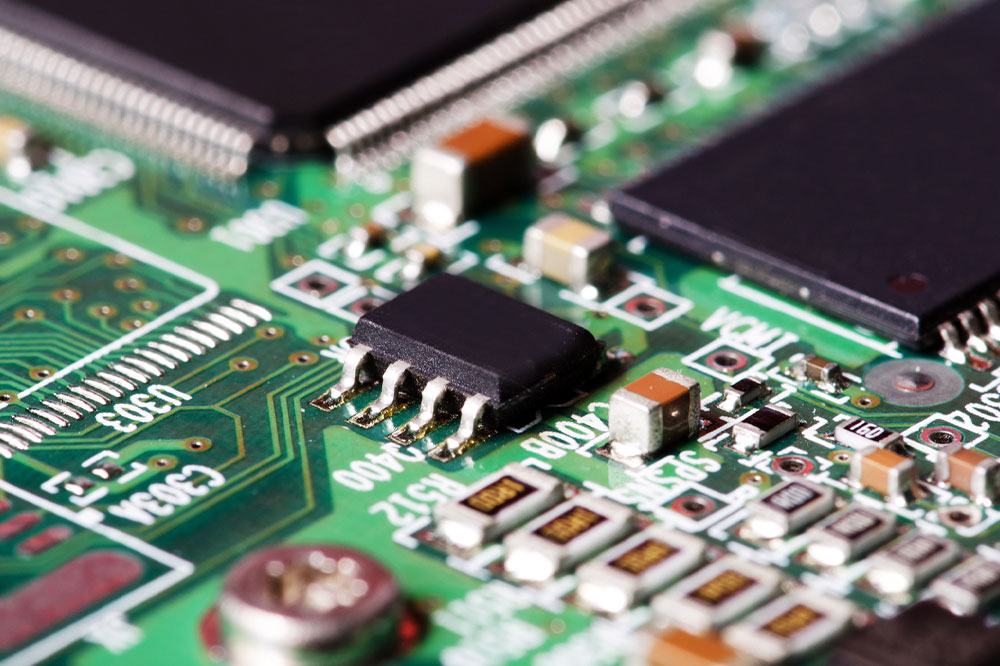
A detailed guide to understand circuit boards
Circuit boards were one of the most significant inventions that signaled the beginning of electronic technology. The complexity of these boards has evolved along with technology, but the underlying concept remains the same. A circuit board component is an electrical part used to construct the full circuit board. Each component must do its assigned task for a circuit board to operate efficiently. Let us understand the circuit boards and components in detail.
Types of the circuit board
The development of circuit boards results from numerous inventions, discoveries, and advancements that have shaped technology development. Here are a few types of circuit boards:
Integrated circuits (ICs)
In the 1950s, a new technology was introduced for making small electrical circuits. These circuits, known as Integrated Circuits, are designed on the surface of a silicon wafer.
It developed into the most effective method for packing millions of miniature components into tiny pieces of silicon around the size of a fingertip. Because of this, electronics and computers have become quite affordable since the 1960s.
Breadboard
It is referred to as a breadboard. The components are inserted into the holes, and the circuit is completed by connecting each element with copper wires, known as jumper wires.
It is difficult to assemble the circuit on a breadboard as the number of components increases. Because of this, designers choose DOT PCBs or common boards, the most organized approach to arranging elements onboard.
Dot circuit boards
Dot PCBs, also known as perf boards or standard boards, are plastic frames with numerous holes that contain copper connecting tracks. These parts are joined using copper wire, solder, and powerful conductive glue.
A DOT PCB is useful for creating handmade electronics and prototype circuitry. But, we need to employ premium boards for circuits with higher complexity levels or high-end applications like products.
Printed-circuit-board
PCBs (Printed Circuit Boards) are plastic boards with thinly printed copper tracks. The circuit layout is chemically printed on the plastic board. PCBs also have holes, but only where PCB components must be placed. Through-hole soldering techniques were used to secure the parts to the board.
PCB components
A PCB will require different circuit board components for various circuits depending on the device or electronic item for which it is designed. These components can include a wide variety of electronic components. Among the most common PCB components are:
Battery
Batteries serve as the components that supply energy in PCBs. Batteries work by storing chemical energy, converting it into electronic energy, and then using that energy to power the various circuits on a printed circuit board. Different types of batteries are utilized in PCBs.
Resistors
Resistors regulate the flow of electricity through them. To determine their worth, they are color-coded. These parts are made to prevent an electric current from traveling through them. The transformation of electrical energy into heat enables this.
Transistor
Transistors are responsible for boosting energy. Transistors come in various varieties, with the bipolar transistor being the most popular. Three components and three pins make up this particular transistor type, allowing current to flow and be amplified.
Capacitors
Capacitors are viewed as miniature batteries because they store the energy. They can experience sudden gains and losses of power.
Inductor
Inductors use a magnetic field to store energy. When energy flows through them, a magnetic field is created. A wire’s magnetic field and the inductance of a wire will both increase with the number of windings.
Diode
They manage and divert current flow by ensuring that energy flows in one direction while preventing it from flowing in another. The flow typically shifts from one positive terminal to the negative.
Switches
Switches manage current flow in a circuit by opening and closing the course. The switch must be clicked once for energy to flow and light a bulb. A second click causes the current to close, turning the light off.
Uses of PCB
Almost every product or equipment that uses a PCB needs a special version. A PCB’s primary function is to link all the parts a device requires. The PCB helps the gadget work and enables sophisticated procedures by utilizing various materials.
Electronic devices
A PCB’s most fundamental job is to allow a straightforward electric gadget operation. The electricity and signals can travel over the channels and route a PCB provides. It enables a device to operate at its most fundamental level. A device might not even function without a PCB component .
Computers
PCBs can be designed based on a combination of components and bespoke features to perform a wide range of operations. It is illustrated well by the PCB, commonly called the computer motherboard, and is employed in the industrial and medical sectors.
If you need PCB assembly for your applications, you must look for a reliable, highly skilled PCB manufacturer and assembler who is fully aware of your application’s requirements.




